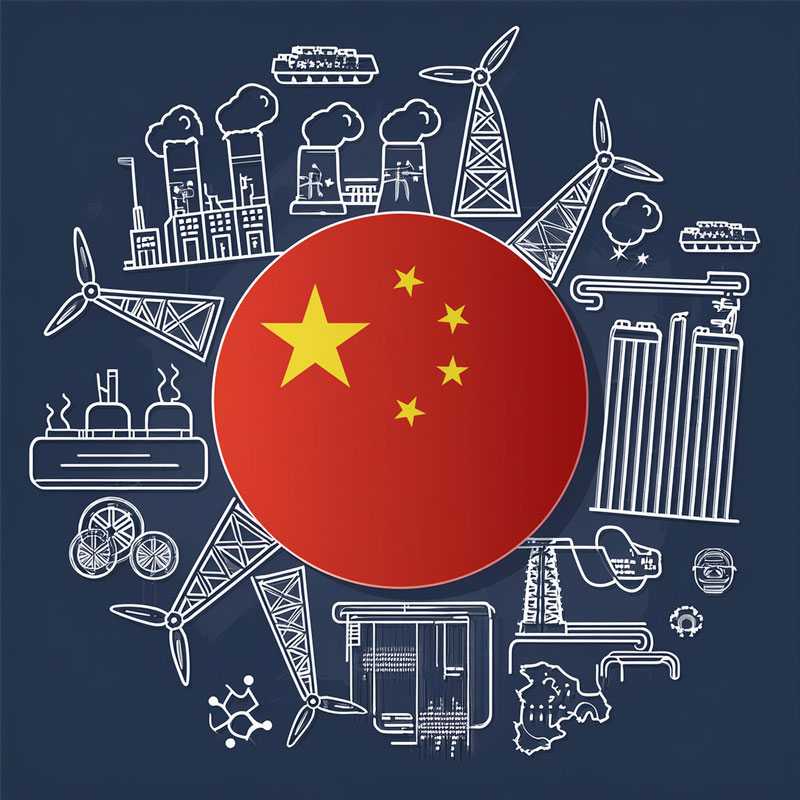

China installed close to 300GW of new solar and wind capacity in 2023, far more than additions in the United States and EU combined. This record-breaking expansion, most of it in solar capacity, keeps China on track to achieve its goals of reaching peak CO₂ emissions before 2030 and carbon neutrality before 2060.
But it also presents a practical problem. Unlike fossil fuels, wind and solar power are intermittent: they generate electricity according to weather conditions rather than demand. They are also often physically located far from consumers. China’s solar capacity is larger than its wind capacity, and a big share of the solar fleet exists in the form of huge megabases in the deserts and wastelands of north and northwest China. Overcoming the challenges of integrating this capacity into the power grid takes time, and China’s construction of new solar and wind plants has outpaced efforts to adapt its system.
The result is rising curtailment. Wind and solar plants are forced to let some power go to waste because the system cannot accommodate it. In the first quarter of 2024, curtailment rates for solar and wind increased to 4% and 3.9%, respectively.
Pressing On
Given the choice between substantially slowing renewables installation and tolerating more wastage, the Chinese government appears to be choosing the latter. In May, the State Council announced a cut in the target utilization rate for wind and solar in certain areas, lowering the minimum from 95% to 90%. For power generation project developers, this lower rate means an easier path to construction approval.
Other factors also augur well for continued wind and solar expansion. Equipment supply is increasingly abundant and cheap: China will add an estimated 500-600GW of PV module production capacity in 2024, and module prices have fallen about 40% over the past year. Renewables can also expect ironclad support from Beijing as the backbone of future economic development. With the ongoing real estate slowdown, clean energy sectors accounted for an estimated 40% of GDP growth in 2023.
So how much expansion should we expect in the near term? Opinions vary on the scale of capacity to be added, though solar is likely to retain the biggest share. The China Photovoltaic Industry Association expects 190GW-220GW of new installed capacity this year, and even bigger annual additions from 2025 to 2030. The government is also likely to push for more installation closer to China’s eastern regions, where energy demand is highest. Several coastal provinces including Jiangsu and Shandong are currently developing ocean-based solar projects, which could serve as a template for other provinces if successful.
Transforming the Power System
While capacity-building remains a top priority, China is not only focusing on power generation. Changes to the power system are also underway which will shape how electricity generated from wind and solar is used. These changes can be grouped into two categories.
Changing the ”hardware” of China’s power system—the physical infrastructure of its power grid. Clean energy megabases in China’s north and northwest require ultra-high-voltage (UHV) transmission lines to connect them with high-demand provinces far across the country. However, the construction of these lines has lagged behind base development. In June, the National Energy Administration (NEA) announced that it will accelerate transmission projects, with the construction of 5 sets of interprovincial UHV lines starting this year.
China is also dialing up its ambitions for energy storage. In May, the State Council raised the target for installed “new energy storage” capacity from 30GW to more than 40GW by the end of 2025. Lithium-ion batteries are the main type of new storage format installed to date, and the rapid expansion of battery manufacturing capacity and the corresponding fall in prices should allow China to quickly surpass this new target.
Alongside energy storage, China also looks to coal to compensate for intermittent drops in wind and solar output. This means transforming the coal fleet into a flexible power source. The government aims to retrofit 200GW of existing coal-fired capacity for this purpose by 2025. A shift in the coal plant business model has also begun. In November, the National Development and Reform Commission (NDRC) announced a new mechanism of guaranteed capacity-based payments to keep coal plants financially viable despite falling utilization.
Changing the “software” of China’s power system—the market mechanisms that determine how power is traded. Besides infrastructure limitations, practices in China’s power market also obstruct the utilization of renewable electricity. A key issue is fragmentation. Provinces in China largely run their own grids, and only a small share of traded electricity is transferred between provinces. Inflexibility is another problem. The majority of traded electricity is dealt in medium-to-long term transactions rather than spot trading, which places solar and wind plants (with their variable output) at a disadvantage.
The NDRC and NEA have set 2030 as the target year for establishing a national unified power market. In September, they issued the basic rules for a national spot market, resolving some discrepancies between pilots launched at provincial (and later interprovincial) level.
These “hardware” and “software” adjustments should facilitate consumption of solar and wind power, even though overall utilization rates may fall with the continued installation of new capacity.
What It Means for MNCs in China
A greater supply of renewable electricity is good news for foreign businesses looking to align their local operations with corporate decarbonization targets. China’s green power market and green electricity certificate scheme are already operational, and earlier this year the State Council pledged to further promote these mechanisms to meet foreign business needs.
Clean energy capacity growth may also create opportunities for foreign energy businesses. China’s latest encouraged foreign investment catalogue includes new energy power stations and storage systems, among other technologies. However, competition from state-owned enterprises and other domestic players remains a challenge for foreign businesses in some energy sectors.
Related Articles
2025: The Year of Oceans—Three Milestone Events Shaping Our Blue Planet
December 19, 2025
COP30 Leader’s Summit Recap
November 10, 2025


